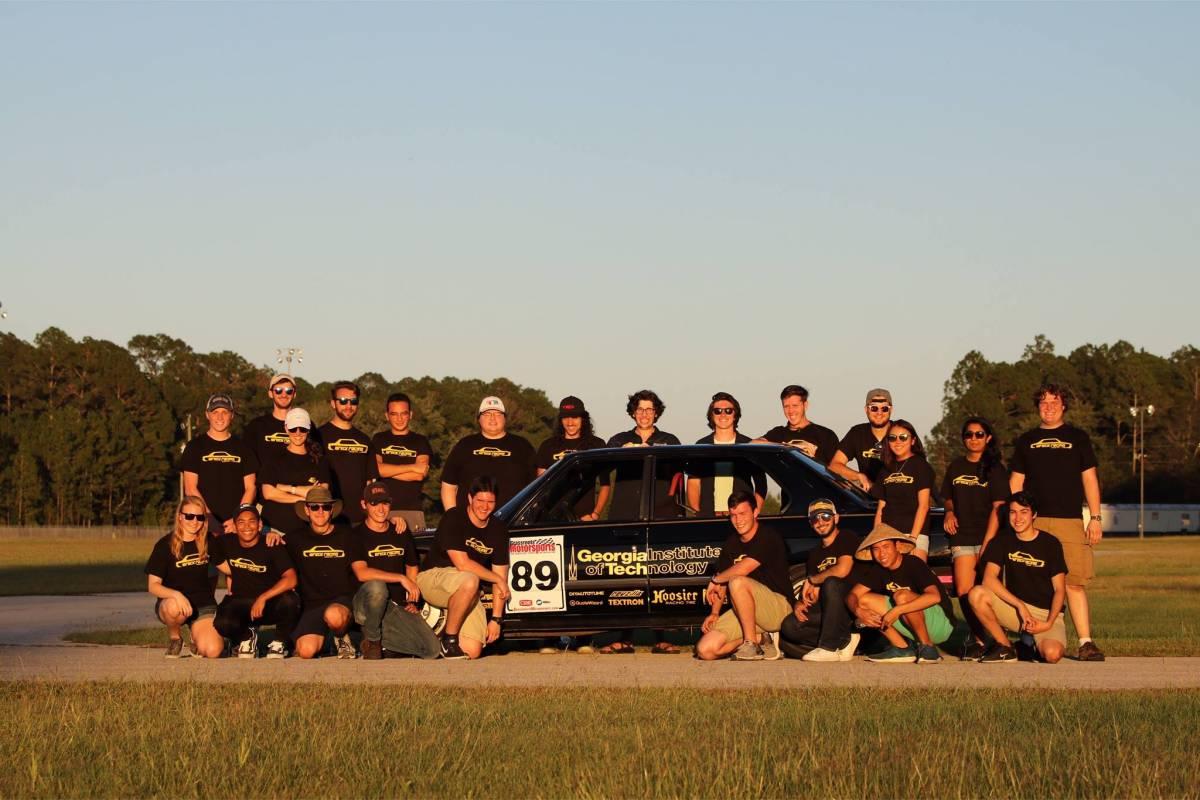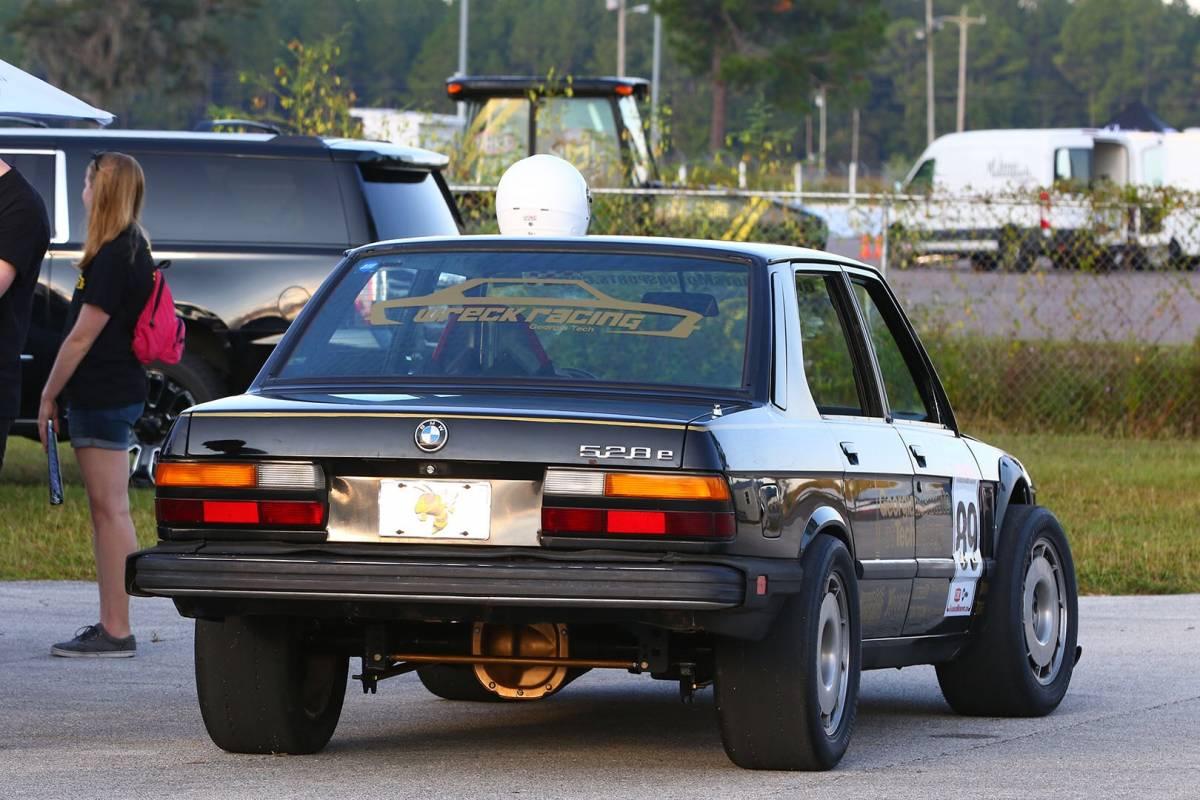The 1980s BMW whips around the autocross track, deftly maneuvering between orange cones and eventually flying across the finish line. More than 30 Georgia Tech students watch intently, hoping that a year of hard work and long nights has paid off.

These students are part of Wreck Racing, a budget racing team made up of dozens of students from across Tech’s majors. The biggest event of the year for them is the Grassroots Motorsports Magazine challenge, which requires them to build a car on a budget the same as the year of the competition: this year, the team had only $2,018 to transform an average production car to a race-ready machine.
After the 2018 race, the Georgia Tech team placed second overall and were recognized for having the best-engineered car in the competition.
“The toughest part of the process is getting started and finding that initial design direction,” said Lawson Sumner, an undergraduate student in the Woodruff School of Mechanical Engineering and president of Wreck Racing. “Every new car and every new competition year begins with a blank whiteboard and a room full of members with big ideas.”
Each year, students challenge themselves to use their engineering and design skills to accomplish a specific goal. This year’s target was building a car that would be able to drive a quarter mile in less than 11 seconds.
That meant creating a vehicle with a big engine, strong axles and the ability to excel at straight-line speed. Drag racing is one component of the competition. Autocross is another, which focuses on handling and maneuverability. The final component is called Concourse, in which the team is judged on the engineering and presentation of the car.
Staying under a $2,018 is just as tough as one would imagine. This year, it meant buying an old BMW for $400 from a used car dealership, digging through junkyards and scouring sites like eBay and Craigslist for cheap parts. What they can’t find, Wreck Racing makes themselves.
“We've been working on it for about a full year start to finish,” said Jordan Rich, former press secretary of Wreck Racing and industrial design student. “We took the whole thing apart and basically went through system-by-system and rebuilt everything to make it a faster race car.”

Wreck Racing is housed in the Georgia Tech Student Competition Center on the corner of 14thStreet and Northside Drive, a huge complex that allows automotive and robotics teams the space and equipment they need to engineer elaborate machines. Wreck Racing uses this facility to custom build the whole suspension of the car, as well as many other components.
The members meet at least twice a week to work on their car, utilizing the theoretical knowledge they learned in their classes for this practical application. Engineers of different majors allow students to specialize on different systems in the car, with electrical and computer engineers focusing on the electrical systems, while mechanical engineers might look at how loads might affect the suspension of the car.
“As a mechanical engineer, my school curriculum in physics, statics, and CAD design created a basis for me to develop skills to build a vehicle,” said Sumner. “All of our E28 BMW's suspension components we developed with Solidworks CAD software and tested in simulation using Solidwork's suite of Finite Element Analysis tools. Understanding how loads and stresses transfer through the parts helped me to model components that would meet the necessary strength requirements.”
When it came down to competition day on October 12, the team realized that the drag racing component would be cancelled due to maintenance. They made the best out of the autocross and concourse components and were pleasantly surprised with the vehicle’s performance in handling. The team placed first in the concourse component, third in autocross and a second overall result. They were also happy to win the award for the best engineered car.
Wreck Racing will drive their BMW for another two years and plan on making a great deal of improvements. They received two turbochargers from a Caterpillar generator as a donation, which should make the car even faster than before. Other tweaks will be made, and the hope is that the car will perform better each consecutive year.
Wreck Racing allows engineering students to apply what they learn in their classes in a very real way, with the added challenge of a very restricted budget. It’s not every day that students get to build something with their hands and then see it whip around a race track.

